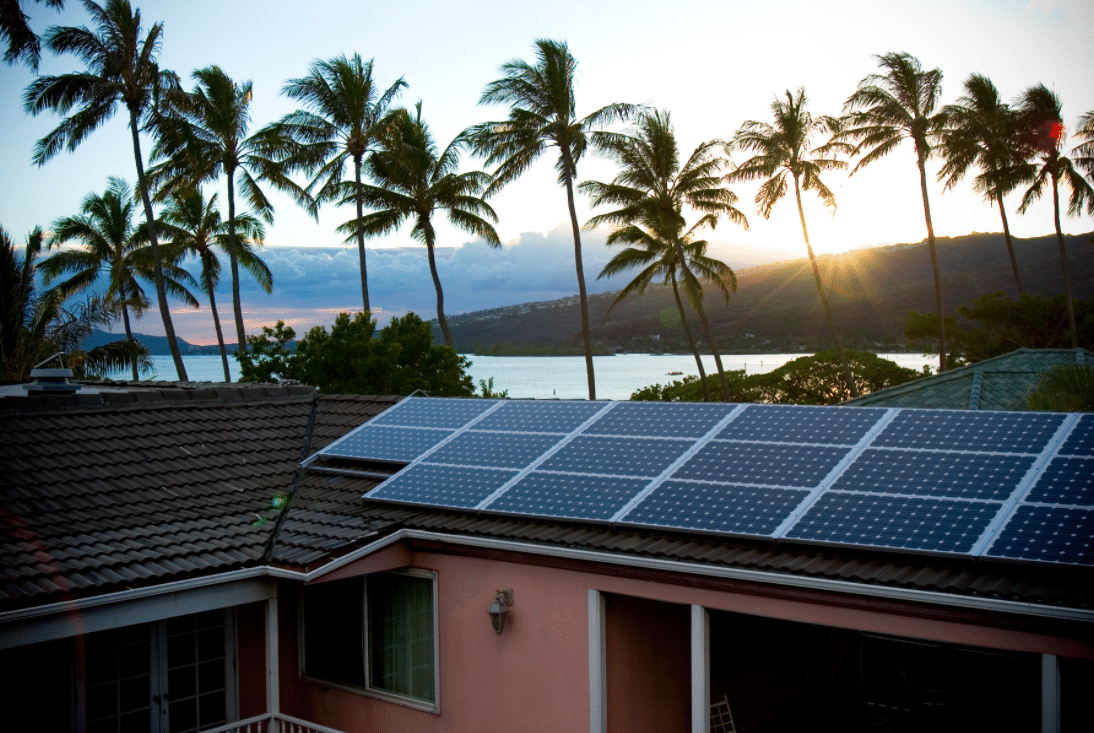Earlier this week, the electricity cooperative on the Hawaiian island of Kaua’i released a new rate proposal for its customers who install distributed solar, which would set two options that create a de-facto mandate for battery storage to accompany PV.
The two options will be familiar to anyone who has followed the closing off of net metering to the customers of Hawaiian Electric Companies in late 2015. Kaua’i Island Utility Cooperative (KIUC) is proposing that its customers who install PV either not export power to the grid, or only export power to the grid when KIUC needs it – which is during the evening and other times, not during most of the daylight hours when PV is actually generating electricity.
This second option – Smart Export – includes a requirement that the PV system include a battery system. For all practical purposes, the first option, Customer Self-Supply, creates a de-facto requirement for batteries, as the customer is barred from exporting anything but the smallest amounts of electricity onto the grid.
KIUC’s proposed changes would not affect those customers who have already installed PV systems. And the proposal needs to be approved by the Hawaiian Public Utilities Commission (HPUC). HPUC has jurisdiction over the utility – despite KIUC being a member-owned cooperative.
Energy storage: not optional any more
The proposed changes are unlikely to boost the island’s distributed solar market, as a recent NREL study found that adding battery storage roughly doubles the cost of a typical residential PV system. But before casting this as yet another utility attempt to limit customer- (or member-) owned solar, it is important to note that the utility-scale solar projects that KIUC has contracted with for the island are also paired with battery storage.
This includes a 13 MW Tesla solar project paired with 52 megawatt-hours (MWh) of battery storage, which came online in March.
The reason has to do with the nature of electricity demand on Kaua’i. The island’s economy is based on tourism and to a less degree agriculture, and as such electricity demand peaks in the evening as tourists return from the beach and the sun goes down. This means that some form of energy storage is required at a lower level of solar penetration than in other geographies where demand peaks during the middle of the day. California is one of such geographies, and before a large amount of customer-sited solar was installed the state had two peaks – one during mid-day, and the other in the evening.
Additionally, as Kaua’i has no electrical connection to other islands, it cannot export surplus electricity, meaning that everything must be balanced on the island’s grid. Despite this, Kaua’i’s level of solar penetration is the highest known to pv magazine for a grid its size. KIUC estimates that solar provided 22.5% of the annual power needs of the island’s 66,000 residents, as well as tourists, during 2016, and expects this to reach 25% this year.
For a detailed exploration of issues of integrating high levels of solar on Kaua’i, please see pv magazine’s 2015 interview with KIUC spokesperson Jim Kelley.
This content is protected by copyright and may not be reused. If you want to cooperate with us and would like to reuse some of our content, please contact: editors@pv-magazine.com.









By submitting this form you agree to pv magazine using your data for the purposes of publishing your comment.
Your personal data will only be disclosed or otherwise transmitted to third parties for the purposes of spam filtering or if this is necessary for technical maintenance of the website. Any other transfer to third parties will not take place unless this is justified on the basis of applicable data protection regulations or if pv magazine is legally obliged to do so.
You may revoke this consent at any time with effect for the future, in which case your personal data will be deleted immediately. Otherwise, your data will be deleted if pv magazine has processed your request or the purpose of data storage is fulfilled.
Further information on data privacy can be found in our Data Protection Policy.